Discussed in the following Daily reports:
Status: Finalised Material from: Esti, Linus
Discussed in the following Daily reports: |
At least nine people were killed by flash floods in Rio de Janeiro on 8-9 April. Heavy downpours flooded parts of Brazil's Rio de Janeiro, including the neighbourhoods of Botafogo and Jardim Botanico. The month of April delivers 95mm of rain on average, but in nine hours on Monday night, 246mm of rain fell according to the station in Copacabana Fort, south of Botafogo. This was the first report of rain this month and, if confirmed, it will mark the highest 24-hour rain total ever recorded in the city of Rio de Janeiro.
Rio de Janeiro receives rain every month of the year but the "rainy season" lasts from December to March. As tragic effects of this heavy rain, roads were closed by flooding and fallen trees. Also, over 5,000 people worked to minimise problems caused by the weather. Landslides are one of the risks facing residents following the heavy rain now. People were told to avoid walking in flooded streets as the water may be contaminated.
https://www.bbc.co.uk/news/world-latin-america-47875343
The plots below show observations and forecasts of 24-hour precipitation valid fro 8 April 12UTC to 9 April 12UTC.




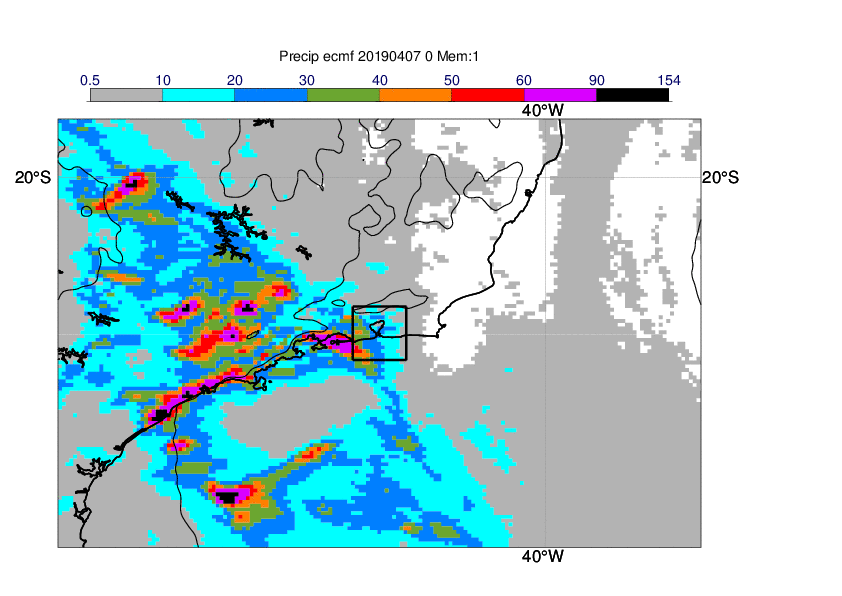

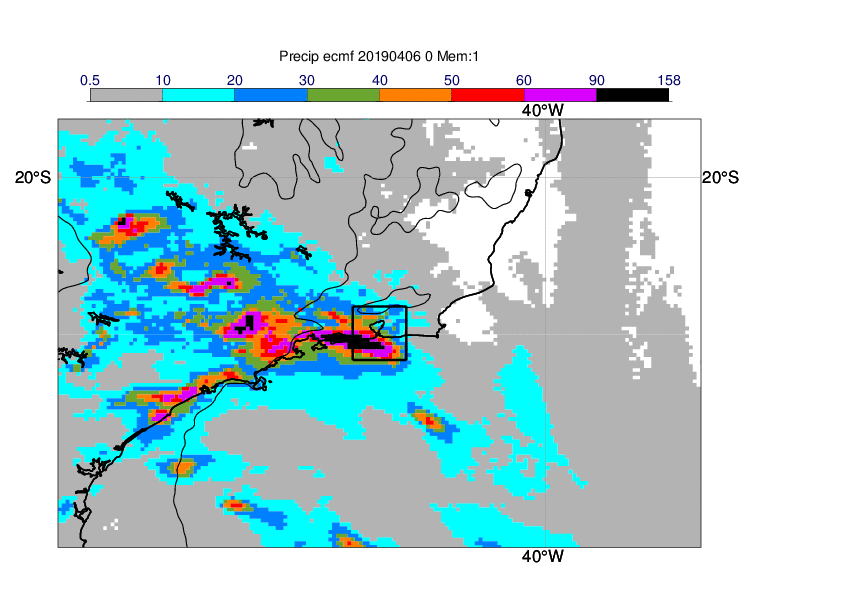
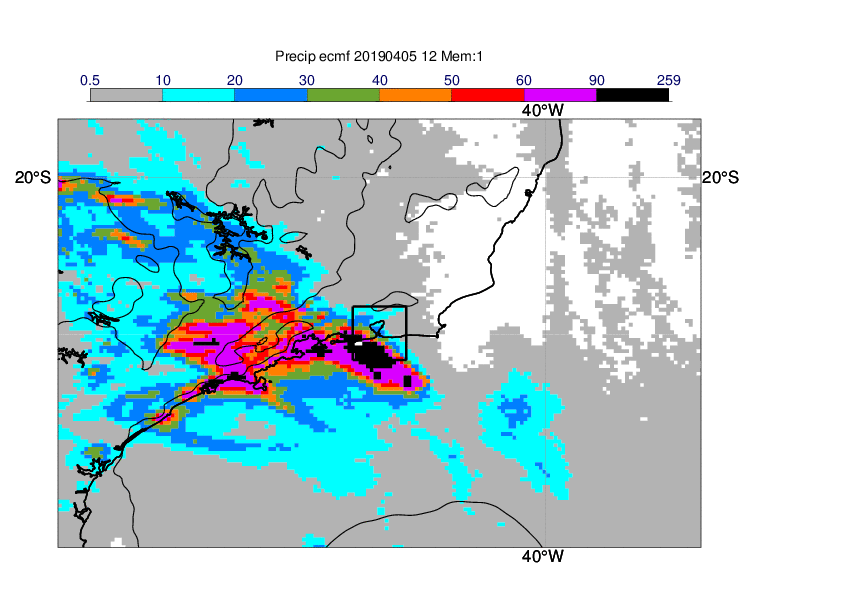

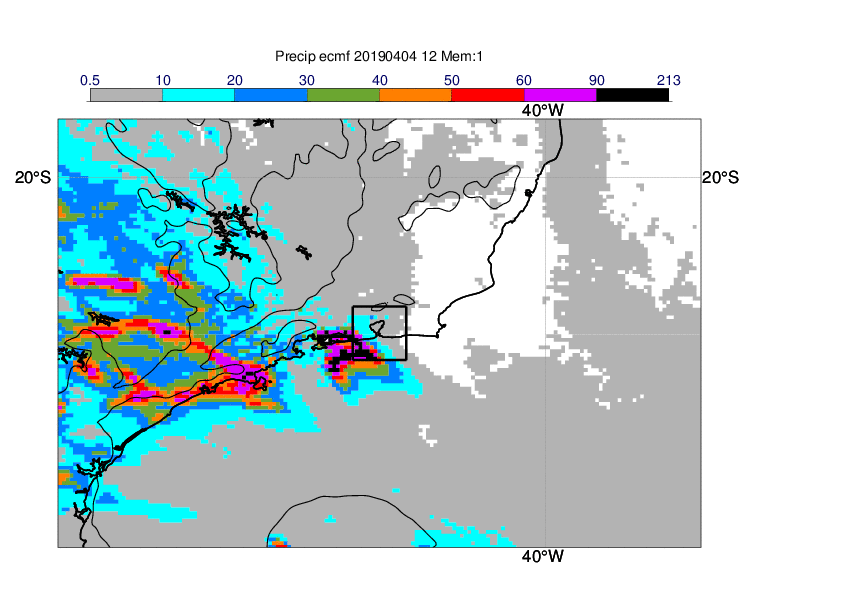


The plots below show EFI and SOT for total precipitation valid 8 April.







The plots below show EFI and SOT for integrated water vapour flux valid 8 April.

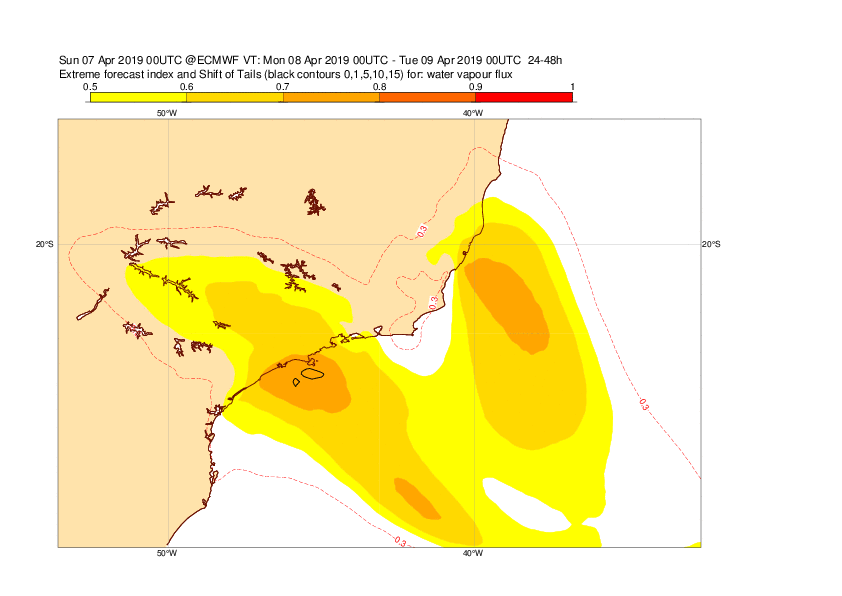









Probability of 12-h precipitation greater than 100mm in the ENS forecast. Base time 8th April 2019 at 00 UTC and valid between 18h and 30h lead time.
Probability of 12-h precipitation greater than 100 mm in the ecPoint forecast. Base time 8th April 2019 at 00 UTC and valid between 18h and 30h lead time.
Probability of 12-h precipitation greater than 150 mm in the ENS forecast. Base time 8th April 2019 at 00 UTC and valid between 18h and 30h lead time.
Probability of 12-h precipitation greater than 150 mm in the ecPoint forecast. Base time 8th April 2019 at 00 UTC and valid between 18h and 30h lead time.
OBSERVATIONS


24h precipitation observations accumulated from 8th April at 06 UTC to 9th April at 06 UTC.
Hourly observations in the SYNOP station in Rio de Janeiro -Forte De Copacabana (Brazil)